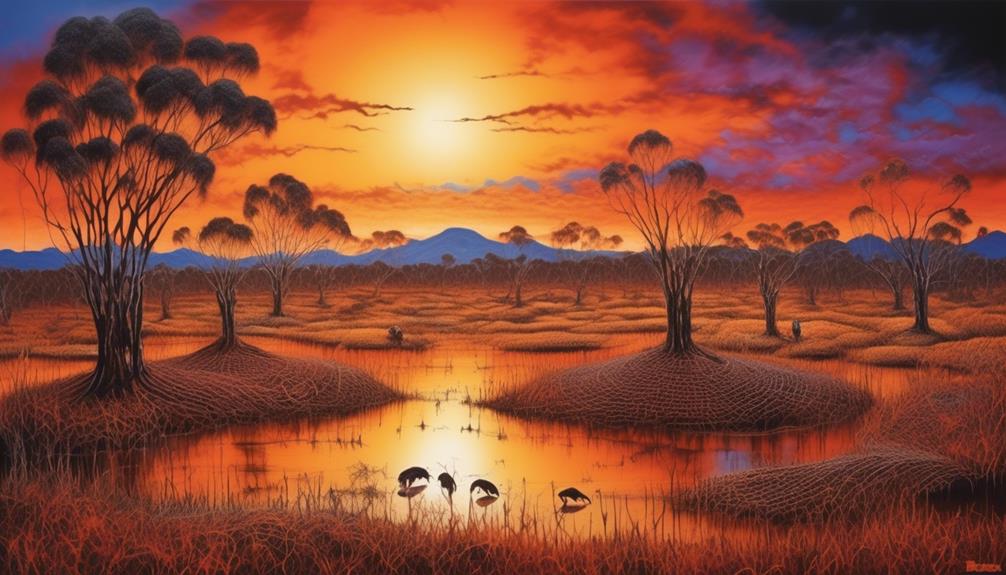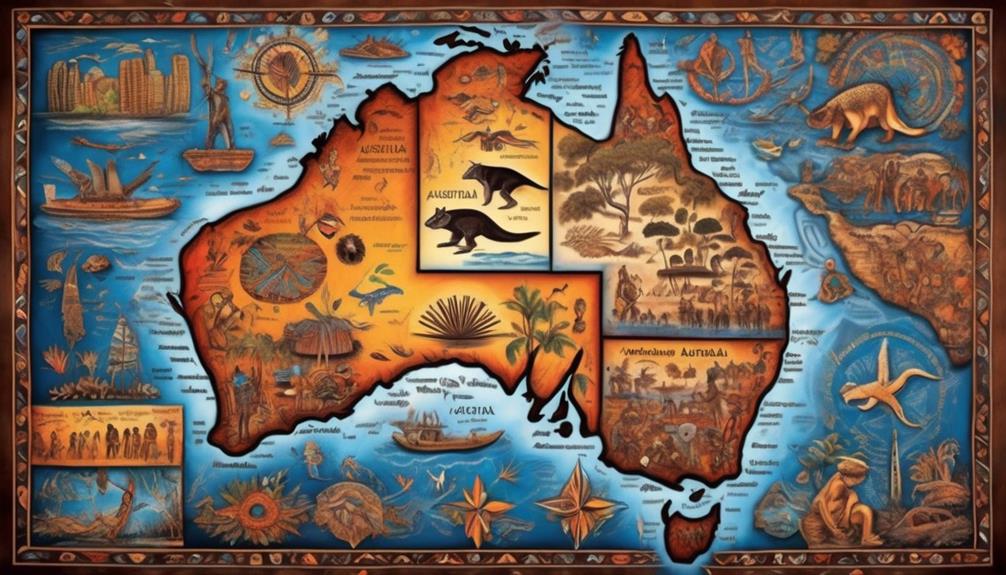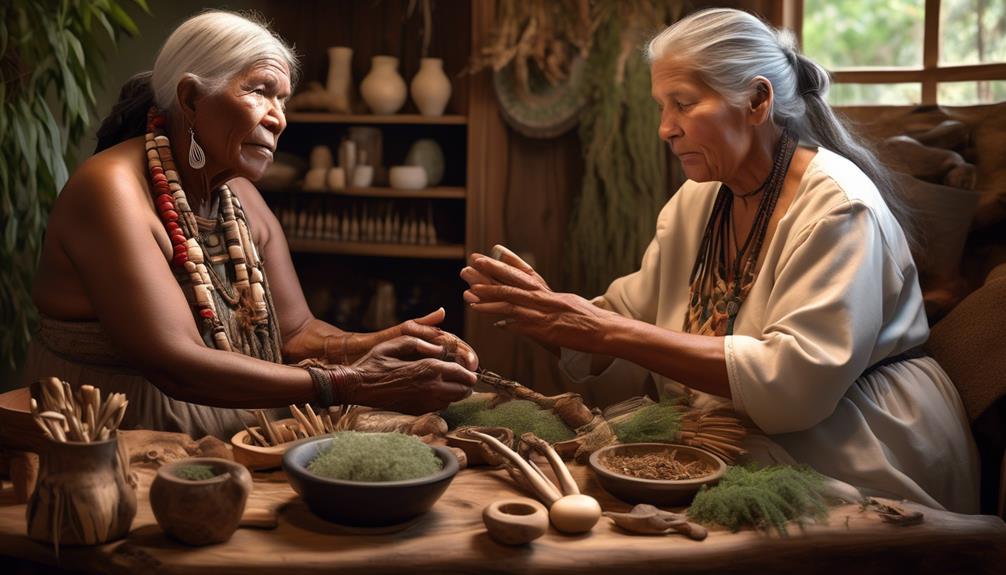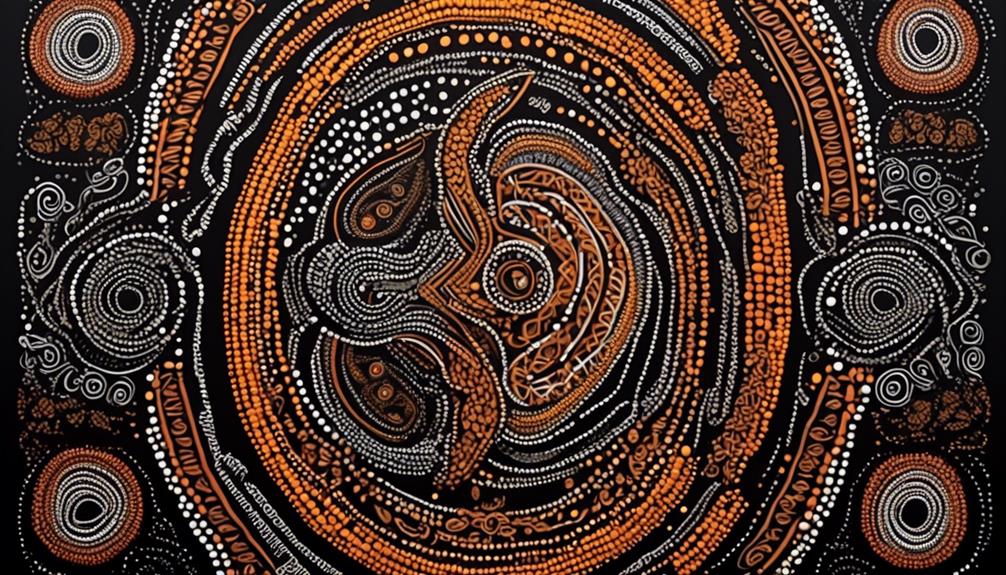Have you ever thought about what truly shapes the deep and intricate web of Aboriginal history? If so, you may have been seeking the best book that captures the detailed and nuanced aspects of this often overlooked dimension of our global history.
There are numerous books out there that claim to provide a comprehensive understanding, but which one really stands out as the most insightful and thought-provoking?
Well, you're in for a treat as we explore some of the most powerful and captivating works that have garnered acclaim for their exceptional portrayal of Aboriginal history.
Whether you are new to the subject or a seasoned enthusiast, these books offer a unique perspective that is sure to leave a lasting impact.
Key Takeaways
- 'The Inconvenient Indian' by Thomas King provides a critical examination of Indigenous experiences in North America and explores the impact of colonialism on Indigenous communities.
- 'Dark Emu' by Bruce Pascoe challenges conventional perceptions of pre-colonial Aboriginal societies and presents evidence of complex and sustainable food production systems.
- 'An Indigenous Peoples' History of the United States' by Roxanne Dunbar-Ortiz provides a comprehensive account of Indigenous experiences in the United States, challenges traditional narratives of U.S. history, and aims to decolonize historical perspectives.
- 'Our Story: Aboriginal Voices on Canada's Past' by Tantoo Cardinal explores the historical narratives, experiences, and perspectives of Indigenous communities in Canada, challenges conventional historical narratives, and amplifies diverse voices within Indigenous communities.
The "Inconvenient Indian" by Thomas King
The 'Inconvenient Indian' by Thomas King offers a thought-provoking and critical examination of the historical and contemporary experiences of Indigenous peoples in North America. King delves into the complexities of colonialism and its lasting impact on Indigenous communities. He explores how colonial powers imposed their ideologies, disrupted traditional ways of life, and subjugated Indigenous peoples. The book delves into Indigenous resistance, highlighting the resilience and strength of Indigenous communities in the face of oppression.
King also critically examines cultural representation, questioning the accuracy and fairness of Indigenous portrayals in historical narratives and popular media. King's work challenges conventional historical narratives, offering a nuanced perspective that encourages readers to critically evaluate the dominant discourse surrounding Indigenous peoples. Through meticulous research and cultural sensitivity, King presents a compelling analysis that seeks to dismantle stereotypes and misconceptions.
His exploration of historical narratives provides a comprehensive understanding of the complexities that have shaped Indigenous experiences in North America. By shedding light on the enduring effects of colonialism and the ongoing struggle for Indigenous rights, King's book prompts readers to engage in meaningful discussions and advocate for social justice.
Dark Emu" by Bruce Pascoe

Exploring the agricultural practices of Indigenous Australians, 'Dark Emu' by Bruce Pascoe challenges conventional perceptions of pre-colonial Aboriginal societies, presenting a compelling reevaluation of their complex and sophisticated systems. Pascoe's work delves into the traditional knowledge of Aboriginal people, shedding light on their advanced agricultural practices.
Through meticulous research, Pascoe unveils a landscape tended with care, revealing that Indigenous Australians engaged in various forms of agriculture, including the sowing, harvesting, and storing of grains. This challenges the notion of hunter-gatherer societies, suggesting instead a more complex and sustainable food production and land management system.
In 'Dark Emu', Pascoe meticulously examines primary sources such as diaries, journals, and explorers' accounts, providing a nuanced and culturally sensitive portrayal of Aboriginal agricultural practices. This reevaluation of history serves to recognize the depth of traditional knowledge possessed by Indigenous Australians, challenging the prevailing narrative of their society as solely nomadic and primitive.
'Dark Emu' encourages a critical reassessment of pre-colonial Aboriginal societies, offering a rich tapestry of evidence that reshapes our understanding of their agricultural heritage and deep connection to the land.
An Indigenous Peoples' History of the United States" by Roxanne Dunbar-Ortiz
In 'An Indigenous Peoples' History of the United States' by Roxanne Dunbar-Ortiz, Roxanne Dunbar-Ortiz provides a comprehensive and meticulously researched account of the Indigenous peoples' experiences and perspectives in the United States. Through her work, she delves into the colonial history of the United States from an Indigenous perspective, offering a critical analysis of the impacts of colonialism on Indigenous communities.
Key Insights:
- Dunbar-Ortiz explores the complex and often overlooked history of Indigenous peoples, shedding light on their resilience and resistance in the face of historical injustices.
- The book challenges traditional narratives of U.S. history, aiming to decolonize historical perspectives and promote a more inclusive understanding of the country's past.
Dunbar-Ortiz's work is a significant contribution to the ongoing efforts of decolonization, providing readers with a deeper understanding of the historical and contemporary struggles faced by Indigenous communities in the United States. By centering Indigenous perspectives and experiences, the book invites readers to critically examine the impacts of colonialism and systemic injustices on Indigenous peoples, ultimately paving the way for a more nuanced and culturally sensitive comprehension of American history.
The Bounty: The True Story of the Mutiny on the Bounty" by Caroline Alexander

Caroline Alexander's 'The Bounty: The True Story of the Mutiny on the Bounty' offers a compelling exploration of the complex dynamics surrounding historical maritime events, providing an insightful perspective following Roxanne Dunbar-Ortiz's critical analysis of colonial impacts on Indigenous communities in the United States.
Alexander's work delves into the mutiny that occurred aboard the HMS Bounty in 1789, exploring the Pacific adventure that led to this extraordinary event. The book meticulously reconstructs the sequence of events, shedding light on the mutineers' motivations and the subsequent struggles for survival and the quest for freedom in the vast expanse of the Pacific.
Alexander's narrative not only captures the intrigue of the mutiny but also provides a nuanced understanding of the cultural and historical contexts, which adds depth to the exploration of this gripping story. The book immerses readers in the world of maritime exploration, offering a vivid portrayal of life at sea during the late 18th century.
Our Story: Aboriginal Voices on Canada's Past" by Tantoo Cardinal
Tantoo Cardinal's 'Our Story: Aboriginal Voices on Canada's Past' offers a profound and multifaceted exploration of the historical narratives, experiences, and perspectives of Indigenous communities in Canada. Cardinal's perspective, rooted in her Cree and Métis heritage, provides a unique insight into the indigenous narratives often overlooked in mainstream historical accounts.
The book delves into the complexities of Canadian history, presenting a rich tapestry of voices that bring historical accuracy and cultural representation to the forefront. Cardinal's work challenges conventional historical narratives, offering a nuanced understanding of Canada's past that's both enlightening and thought-provoking.
- Engaging Perspective: Cardinal's personal experiences and insights provide a compelling and engaging perspective that invites readers to see history through the eyes of Indigenous peoples.
- Diverse Voices: The book amplifies the diverse voices within Indigenous communities, shedding light on the multifaceted nature of their historical experiences.
Cardinal's meticulous attention to detail and dedication to amplifying indigenous voices make 'Our Story' an essential read for those seeking a deeper understanding of Canada's complex historical tapestry.
Frequently Asked Questions
Can You Recommend Any Other Books on Aboriginal History That Focus on Specific Regions or Tribes?
For regional perspectives and tribal histories on Aboriginal history, delve into books that explore oral traditions and family narratives. These sources often provide detailed insights into specific tribes and regions, offering a nuanced understanding of their history and culture.
Look for works that prioritize Indigenous voices and perspectives, as they offer a more authentic and comprehensive portrayal of Aboriginal history from various regions and tribal perspectives.
Are There Any Books That Discuss the Impact of Colonization on Aboriginal Communities in a More Personal or Intimate Way?
You can explore personal narratives and indigenous perspectives on the impact of colonization by reading 'The Education of Augie Merasty: A Residential School Memoir' by Joseph Auguste Merasty.
This book provides an intimate account of the author's experience in a residential school, offering insight into the colonial impact on Aboriginal communities and their cultural resilience.
It's a powerful example of how personal stories can illuminate the broader historical and social effects of colonization.
What Are Some Resources for Further Learning About Contemporary Aboriginal Issues and Activism?
To learn more about contemporary Indigenous issues and activism, consider exploring resources like academic journals, documentaries, and online courses.
These can provide in-depth education on topics such as cultural preservation, land rights, and political advocacy.
Engaging with Indigenous scholars, attending community events, and supporting Indigenous-led organizations are also valuable ways to gain insight and contribute to meaningful change.
Your dedication to understanding and supporting Indigenous communities is essential for progress.
Are There Any Books That Explore the Intersection of Aboriginal History and Environmental Conservation Efforts?
Interested in the intersection of aboriginal history and environmental conservation efforts? Look into books that delve into Indigenous perspectives on traditional ecological knowledge and environmental activism. These resources provide a nuanced understanding of the deep connection between Indigenous communities and their environment, shedding light on their conservation efforts.
Can You Recommend Any Fiction or Poetry Written by Aboriginal Authors That Provide Insight Into Their History and Culture?
For insight into Aboriginal history and culture through fiction and poetry, explore Indigenous storytelling, which serves as a vital tool for cultural preservation. Aboriginal literature offers a rich historical narrative, providing diverse perspectives on their experiences.
Look for works by authors such as Kim Scott, Alexis Wright, and Ali Cobby Eckermann for a nuanced understanding of Indigenous heritage and traditions. Their writings offer a deep dive into the complexities of Aboriginal history and cultural identity.
Conclusion
When it comes to understanding the complexities of Aboriginal history, these books offer a deeper, more nuanced perspective that challenges traditional narratives.
Their powerful storytelling and insightful analysis will leave you with a new understanding of the struggles and triumphs of Indigenous peoples.
Dive into these books and discover the untold stories that will evoke empathy, provoke thought, and ultimately shed light on the rich and diverse history of Aboriginal communities.
Nayeli is our dedicated Editor in Chief, bringing her passion for words and keen editorial eye to every piece of content we produce. With years of experience in the field, she ensures that every article and publication meets the highest standards of quality and clarity. Nayeli’s commitment to storytelling and her deep understanding of our mission make her an invaluable leader in our team.










